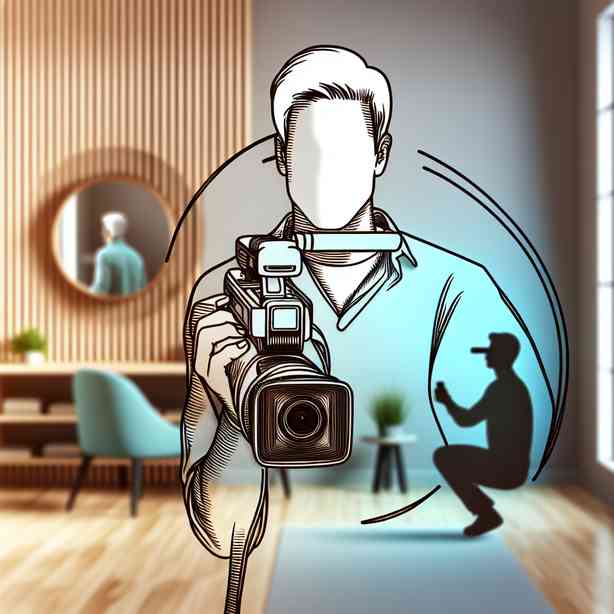
Filming your form can be an invaluable practice, especially in a world that increasingly relies on visual documentation for learning, improvement, and feedback. Whether you’re an athlete aiming to refine your technique, a performer perfecting your craft, or just someone eager to document progress, understanding why filming your form matters and how to do it effectively can take your skills to the next level.
First and foremost, capturing your form allows you to review and analyze your movements in a way that is often difficult to achieve in real time. It provides a unique perspective that is far removed from the immediate experience of performing. When you watch videos of yourself, you can spot inconsistencies, incorrect techniques, or areas needing improvement that you may not notice while in the midst of the action. This reflective practice is key to enhancing your skills, as it enables you to develop a deeper understanding of your own body mechanics and performance style.
Moreover, filming allows you to track your progress over time. By comparing past videos to current ones, you can visually assess improvements or regressions in your technique. This is particularly useful for athletes or performers, as it helps to keep you motivated by visually demonstrating how far you’ve come. The positive reinforcement of progress can fuel further dedication and commitment to practice, creating a feedback loop that enhances growth and development in your skills.
In addition to self-analysis and tracking progress, sharing your videos with coaches or peers can generate constructive feedback. When others observe your form, they may notice aspects you’ve overlooked and provide insights that can lead to significant improvements. This collaborative approach not only enhances individual performance but also fosters a supportive community where everyone learns and grows together. Sharing videos can be a great way to engage with others who share your interests, creating a network of support that uplifts and motivates.
Aside from practical skill development, filming your form can also serve as an excellent tool for setting goals and focusing your training. By identifying specific areas for improvement from your recordings, you can set measurable objectives and tailor your training regimen to those needs. For instance, if you notice a particular flaw in your posture during a performance, you can then concentrate your practice on correcting that issue. This goal-oriented approach can enhance your overall training experience, making it more structured and purposeful.
While the benefits of filming are numerous, it’s essential to approach this practice with intentionality. Consider the environment in which you film: good lighting, a clear background, and a suitable camera angle are crucial for capturing the details of your movements accurately. Taking the time to set up your filming space can make a significant difference in the quality of your recordings, allowing you and anyone who views them to glean better insights into your form.
When it comes to reviewing your footage, make sure to do so with a critical but constructive mindset. Instead of focusing solely on what didn’t go well, try to balance this with acknowledgment of what you did effectively. This constructive feedback loop can establish a more positive relationship with your learning process. Recognizing your strengths alongside your areas for improvement can foster a more sustainable motivation and self-acceptance, vital aspects of any learning journey.
Even technology can play a role here. With advancements in video analysis tools and apps, you can take your practice a step further. Many tools allow you to slow down the footage, add overlays, or draw on the video to highlight specific areas. By utilizing these features, you can create an effective visual aid that not only serves your personal development but can also be shared in coaching environments to facilitate discussions about technique and progression.
Another significant aspect is the role of filming in performance evaluation. For performers—be it dancers, musicians, or actors—the ability to record and review performances adds an additional layer of critique and improvement. Watching a recorded performance can help you identify not only technical mistakes but also opportunities to enhance your expressiveness, stage presence, and overall connection with your audience. This awareness is crucial in refining your artistry and creating more impactful performances.
Furthermore, documenting your journey through filming can serve as a source of inspiration. Looking back at your earlier forms and performances can remind you of your growth, sparking motivation to push through challenges. Sharing these videos on social media or personal platforms can inspire others while fostering a sense of community. Viewing others’ journeys can also be a source of inspiration, creating a mutual exchange of encouragement and motivation.
Lastly, let’s address common concerns about filming yourself. Many individuals might feel self-conscious or critical of their appearance or performance when they view themselves on video. It’s vital to recognize that this feeling is normal, yet confronting it can lead to tremendous personal growth. By developing a mindset that embraces vulnerability, you can learn to appreciate the process rather than fixating solely on the outcome. Engaging in this practice can cultivate resilience and self-awareness that extend far beyond the realm of performance.
In conclusion, the act of filming your form presents a multitude of benefits that can significantly enhance your practice and performance. From enabling self-analysis to tracking progress, facilitating feedback and goal setting, and ultimately fostering personal growth and resilience, the advantages are profound. Embracing this practice with intentionality and positivity can lead to a deeper understanding of your craft, making your journey not only about skill enhancement but also about cultivating a passionate and enduring connection to your art or sport. So, grab your camera and start documenting your journey; the insights gained can be the key to unlocking your full potential.


